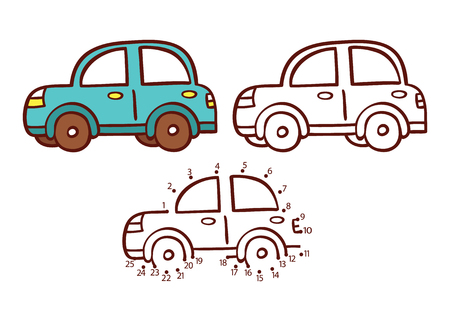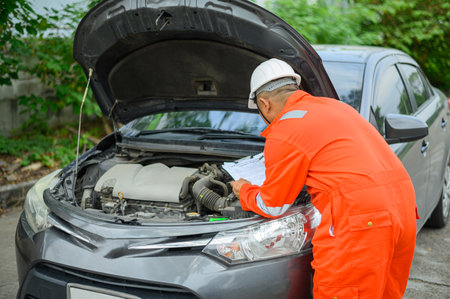1. Understanding Common Transmission Issues
Your vehicle’s transmission plays a critical role in ensuring smooth gear shifts and overall driving performance. When it starts experiencing problems, you may notice certain warning signs. Understanding these common transmission issues can help you determine when to seek professional repairs.
Slipping Gears
If your car suddenly changes gears or struggles to stay in a specific gear, you may be dealing with a slipping transmission. This can happen due to worn-out transmission bands, low fluid levels, or internal damage.
Delayed or Rough Shifting
When your transmission hesitates before shifting, or if gear changes feel jerky, this could indicate a problem with the transmission fluid, solenoids, or internal components.
Fluid Leaks
Transmission fluid keeps your system lubricated and functioning properly. If you notice reddish or dark spots under your car, it may be leaking transmission fluid, leading to overheating and further damage.
Common Transmission Problems and Their Possible Causes
| Problem | Possible Causes |
|---|---|
| Slipping Gears | Low transmission fluid, worn-out clutch, damaged bands |
| Delayed Shifting | Clogged transmission filter, faulty solenoids, low fluid levels |
| Fluid Leaks | Cracked seals, worn gaskets, damaged transmission pan |
Recognizing Early Symptoms
Ignoring these transmission problems can lead to expensive repairs or even complete failure. If you experience any of these warning signs, it’s best to consult a professional mechanic before the issue worsens.
2. Diagnosing Warning Signs
Your car’s transmission plays a critical role in keeping your vehicle running smoothly. When something goes wrong, catching the issue early can save you from expensive repairs or even a full transmission replacement. Here are some key warning signs that indicate it’s time to seek professional help.
Unusual Noises
Strange sounds coming from your transmission are often the first sign of trouble. Pay attention to the following noises:
| Noise | Possible Cause |
|---|---|
| Grinding | Worn gears or low transmission fluid |
| Whining | Failing transmission pump or fluid issues |
| Clunking | Loose or damaged internal components |
Burning Smell
A burning odor inside or around your car could indicate overheating transmission fluid. When the fluid overheats, it loses its ability to properly lubricate and cool the transmission components, leading to serious damage if left unchecked.
Dashboard Warning Lights
Many modern vehicles are equipped with sensors that detect transmission issues. If your check engine light or a dedicated transmission warning light appears on your dashboard, it’s a good idea to have your vehicle inspected by a professional as soon as possible.
Other Symptoms to Watch For
- Delayed or rough shifting
- Slipping gears
- Leaking transmission fluid
- Unresponsive acceleration
If you notice any of these warning signs, don’t ignore them. Transmission problems usually worsen over time, and getting help early can prevent costly repairs down the road.

3. Three, When DIY Fixes Are Not Enough
Trying to fix your car’s transmission at home can save money if the issue is minor. However, some problems should only be handled by a professional. Understanding when to stop DIY repairs and call a mechanic can save you from bigger, more expensive issues down the road.
Recognizing the Limits of DIY Repairs
Some transmission problems may seem simple but require special tools, knowledge, or experience. Below are common transmission issues and whether they can be handled at home or need professional attention:
| Issue | DIY or Professional? | Why? |
|---|---|---|
| Low or dirty transmission fluid | DIY | Checking and replacing fluid is simple and requires basic tools. |
| Loose or damaged transmission pan | DIY | Tightening bolts and replacing gaskets can be done at home. |
| Slipping gears | Professional | May indicate internal damage that requires specialized repair. |
| Burning smell from transmission | Professional | Often caused by overheating, which could lead to serious damage. |
| Check engine light with transmission codes | Professional | Needs diagnostic tools and expertise to identify the exact issue. |
Signs Your Transmission Needs Professional Repair
If you notice any of these warning signs, it’s best to stop DIY repairs and seek professional help:
- Grinding or shaking: Unusual vibrations while driving could indicate internal transmission damage.
- Delayed shifting: If your car hesitates or struggles to change gears, a deeper issue may be present.
- Transmission fluid leaks: A red or brown fluid leak under your car suggests seal or gasket failure.
- Unusual noises: Whining, clunking, or buzzing sounds from your transmission are not normal.
Protecting Your Transmission from Further Damage
Continued driving with transmission problems can make repairs more expensive. Taking your car to a certified mechanic as soon as you notice a serious issue can prevent further damage and extend the lifespan of your transmission.
4. Finding a Qualified Transmission Specialist
When your vehicles transmission starts acting up, its crucial to find a trustworthy professional to handle the repairs. Choosing the right transmission specialist can save you time, money, and future headaches. Here are some essential tips to help you find a qualified transmission repair shop.
Check for Certifications
A reputable transmission repair shop should have certified technicians who specialize in transmission diagnostics and repairs. Look for the following certifications:
| Certification | What It Means |
|---|---|
| ASE (Automotive Service Excellence) | Technicians have passed industry-standard tests and meet professional competency levels. |
| ATRA (Automatic Transmission Rebuilders Association) | A shop that follows ATRA guidelines ensures reliable transmission repair services. |
| Manufacturer-Specific Certifications | Some mechanics are trained by specific car manufacturers, ensuring expertise in your vehicle’s brand. |
Read Online Reviews and Ask for Recommendations
Before committing to a repair shop, take the time to read online reviews from past customers. Websites like Google Reviews, Yelp, and the Better Business Bureau (BBB) can provide insights into the shop’s reputation. Look for:
- High overall ratings (4 stars and above).
- Consistent positive feedback about work quality and customer service.
- Detailed reviews mentioning successful transmission repairs.
Additionally, ask friends, family, or coworkers if they have recommendations for a trusted transmission repair shop. Word-of-mouth referrals can often lead you to reputable professionals.
Inquire About Warranties and Pricing
A trustworthy transmission repair shop will stand behind its work. When comparing options, ask about warranties on parts and labor. A solid warranty typically includes:
- Labor Warranty: Covers the work done by the mechanic for a specific period.
- Parts Warranty: Guarantees that replacement parts are free from defects.
- Transmission Repair or Rebuild Warranty: Should last at least 12 months or 12,000 miles.
Additionally, request a written estimate before authorizing any repairs. A reputable shop should provide clear pricing and explain any potential additional costs.
Look for Transparency and Communication
A good transmission specialist will take the time to explain the problem and the necessary repairs in a way thats easy to understand. Avoid shops that pressure you into immediate repairs without a thorough diagnosis.
Visit the Shop and Assess Their Professionalism
Before making your final decision, visit the repair shop in person. Pay attention to the cleanliness of the facility, the professionalism of the staff, and the number of vehicles being serviced. A well-maintained and organized shop often indicates a business that takes its work seriously.
5. Preventative Maintenance to Avoid Costly Repairs
Taking care of your transmission before problems arise can save you a lot of money and headaches. By following simple maintenance steps, you can extend the life of your transmission and avoid major repair costs. Below are the best practices for maintaining your transmission.
Regular Transmission Fluid Checks
Transmission fluid is essential for lubricating and cooling the moving parts inside your transmission. If the fluid level is low or the fluid is dirty, it can cause serious damage. Follow these steps to check your transmission fluid:
How to Check Transmission Fluid
- Park your vehicle on a level surface and turn on the engine.
- Locate the transmission dipstick (usually labeled with a red or yellow handle).
- Pull out the dipstick, wipe it clean with a cloth, and reinsert it fully.
- Pull the dipstick out again and check the fluid level. It should be between the “Min” and “Max” marks.
- Inspect the fluid color. It should be bright red or pink. Dark or burnt-smelling fluid may indicate a problem.
Schedule Timely Servicing
Regular transmission servicing ensures smooth performance and prevents potential issues. Different vehicles have varying service intervals, but here are general recommendations:
| Maintenance Task | Recommended Frequency |
|---|---|
| Transmission Fluid Change | Every 30,000 to 60,000 miles |
| Transmission Filter Replacement | Every 30,000 miles |
| Transmission Inspection | Annually |
Avoiding Common Driving Mistakes
Bad driving habits can put unnecessary strain on your transmission. Here are some common mistakes to avoid:
- Sudden Acceleration and Hard Braking – These actions put stress on the transmission and cause premature wear.
- Shifting Gears While Moving – Always make a full stop before shifting from drive to reverse or vice versa.
- Ignoring Warning Signs – If you notice slipping gears, delayed shifting, or unusual noises, have it checked immediately.
Using the Right Type of Transmission Fluid
Not all transmission fluids are the same. Always use the type recommended by your vehicle’s manufacturer. Using the wrong fluid can lead to poor performance and even damage your transmission.
How to Find the Right Transmission Fluid
- Check your owner’s manual for the specified type of transmission fluid.
- If unsure, consult with a professional mechanic before purchasing fluid.
- Avoid mixing different types of transmission fluids unless approved by the manufacturer.
Keep Your Transmission Cool
Overheating is one of the main causes of transmission failure. Keeping your transmission cool can help prevent issues:
- Ensure your radiator is in good condition, as it helps cool the transmission fluid.
- If you tow heavy loads frequently, consider installing an external transmission cooler.
- Check fluid levels regularly, as low fluid can lead to overheating.
By following these preventative maintenance tips, you can keep your transmission running smoothly and reduce the chances of needing expensive repairs.


